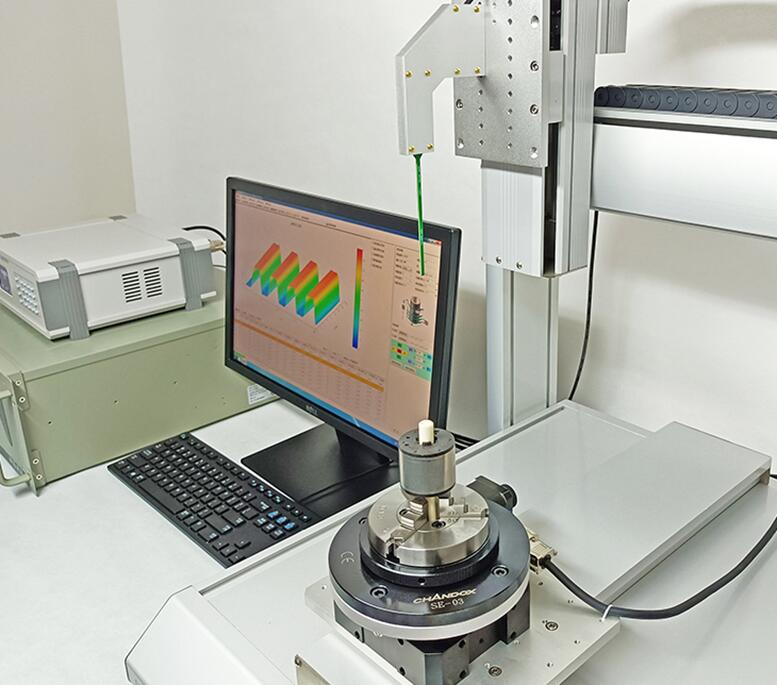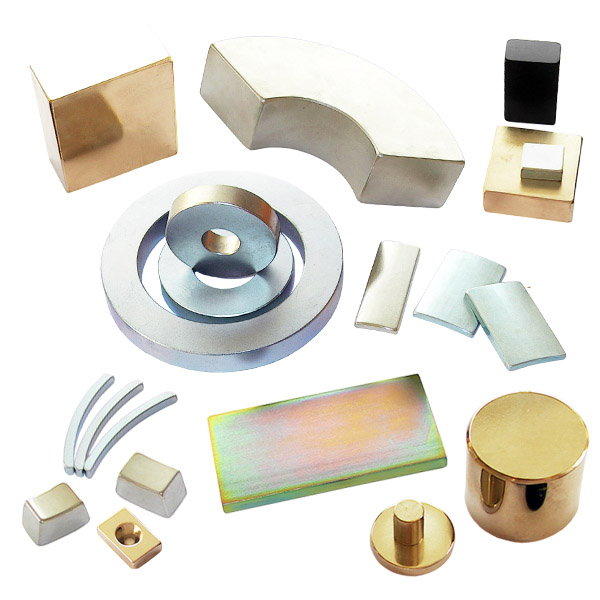How to use a gauss meter to measure the surface magnetism of a magnet
The measurement tool for surface magnetism usually uses a Gauss meter, also called a Tesla meter. The picture below is a very widely used Japanese KANETEC gauss meter.
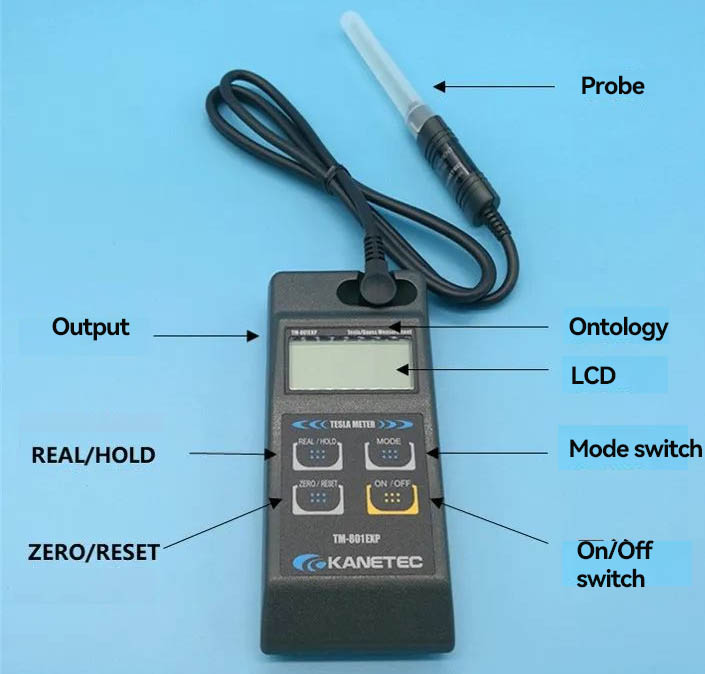
The working principle of the gauss meter is mainly the application of the Hall effect: when a current-carrying conductor is placed in a magnetic field, due to the action of the Lorentz force, a transverse potential difference will appear in the direction perpendicular to the magnetic field and the current. The gauss meter is an instrument based on the principle of the Hall effect for magnetic field measurement. The Hall probe generates a Hall voltage due to the Hall effect in the magnetic field. The measuring instrument converts the magnetic field strength value based on the Hall voltage and the known Hall coefficient.
 | 1. In ordinary conductors, the movement of electrons is chaotic and collides constantly. |
 | 2.When electrodes are added to two points of the conductor, electrons will form a stable current that drifts laterally. |
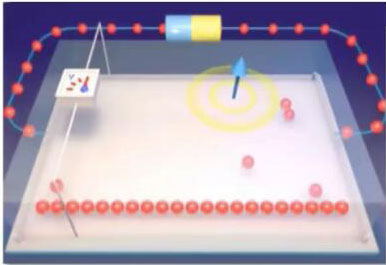 | 3. If an external magnetic field is applied in the vertical direction, the electrons in the material will run to one side of the conductor to form accumulated charges due to the force of the magnetic field, and will eventually balance to form a stable Hall voltage. |
The current gauss meter is generally equipped with a one-way Hall probe, that is, it can only measure the magnetic field strength in one direction, that is, it can only measure the magnetic field strength perpendicular to the direction of the Hall chip. In some high-end measurement fields, there are also Hall probes that can measure three-dimensional magnetic fields. Through the conversion of measuring instruments, the magnetic field strength in the directions of X, Y, and Z axes can be displayed at the same time. The maximum magnetic field strength can be obtained through the conversion of trigonometric functions.
Gauss meters can generally measure DC magnetic fields and AC magnetic fields, and the units can generally be switched to display the Gaussian unit Gs or the international system unit millitesla mT, and the measurement of DC magnetic fields is the most widely used in the industry.
If you need to measure the real-time magnetic field, you need to use the real function, and the display will display the real-time magnetic field value and polarity
The hold function is required when the peak magnetic field and corresponding polarity need to be captured during the measurement.
As shown in the figure below, the display will display "hold", and the displayed value and polarity are the captured peak magnetic field and its corresponding polarity. If there is no display, it is a real function. Press the MODE button to switch to the AC magnetic field test mode, as shown in the figure below, the "~" symbol appears on the screen.

Precautions for the use of Gauss meter:
1. When using a gauss meter to measure surface magnetism, the probe should not be bent excessively. The Hall chip at the end should generally be in light contact with the surface of the magnet. On the one hand, this is to ensure that the measurement point is fixed.
2. Both sides of the Hall chip can be sensed, but the value and polarity are different. The scale surface is used for convenient measurement and cannot be used as the measurement surface. The non-scale surface is the measurement surface.
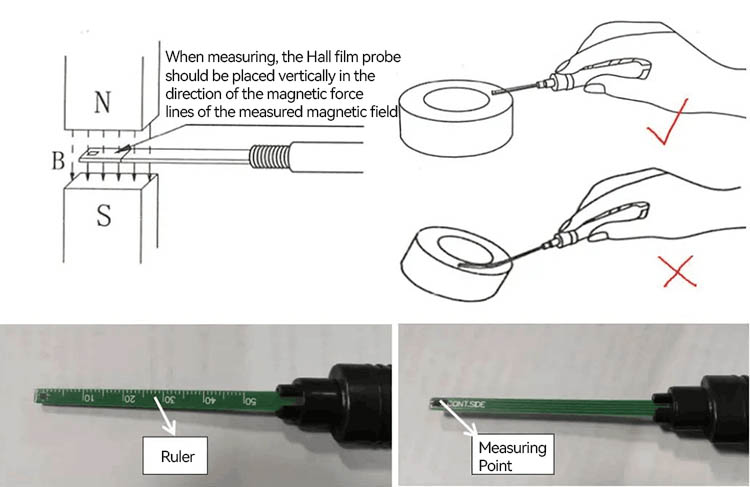
The gauss meter measures the default magnetic field strength Bz of the vertical measurement surface. The following figure is a simulation diagram of an ordinary Z-axis magnetized magnet. It can be seen that the magnetic field is a vector, and the Z-axis magnetic field strength can be regarded as Bz=. Since the magnetic circuit path at the corner is the shortest, the magnetic field lines at the corner will be denser, and the magnetic field strength B is stronger than the center, but Bz is not necessarily stronger than the center.
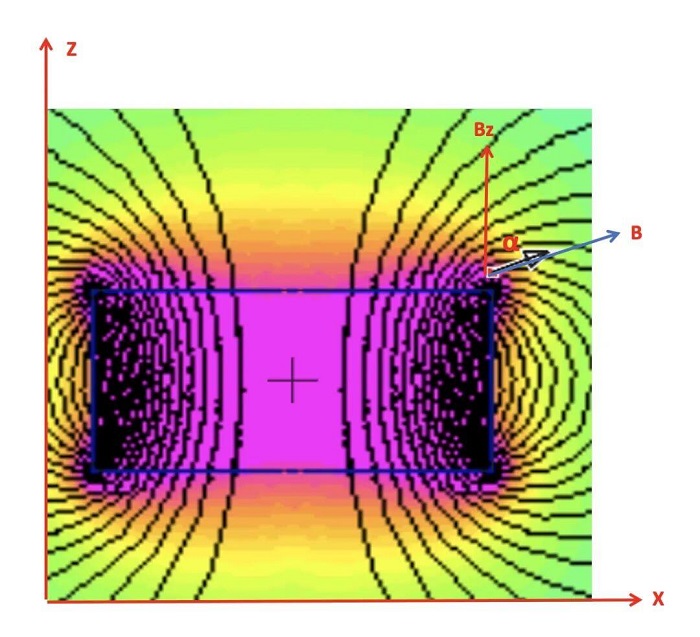
What needs special attention here is that when the magnetization directions are different, even if it is the same measurement surface, the difference in the measured value is very large.
For those that need to measure dynamics or need to fit the magnetic field of different measurement positions into waveform curves, a magnetic field scanner is required. It still needs to be measured by a unidirectional or three-dimensional Hall chip, and then the magnetic field measurement curve is output by designing the measurement trajectory and data acquisition.
